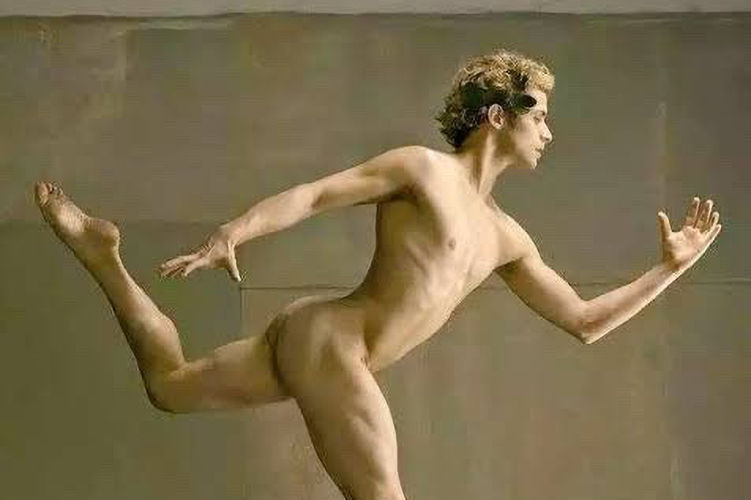Ancient Greek Mythology and Photographic Inspiration
- Claude Gauthier
- Dec 30, 2024
- 4 min read

The richness of the mythology of Ancient Greece and Rome is such that all human emotions are personified in it. Mythology includes a large number of gods, goddesses, demigods and heroes. Every force of nature is represented by a god. Every human emotion is personified in mythology.
These wonderful legends present a coherent whole, understandable by all and frozen in time.
This is why artists of all centuries have been inspired by this mythology: painters, musicians, sculptors have drawn from a reservoir of endless emotion to construct their work.
Photographers were no exception.
This discussion was held as part of a meeting of the "Creation in Photography " group, aimed at stimulating the creativity of the participants by exploring the rich and evocative universe of Greek mythology. The main objective was to engage in a fruitful exchange around mythological characters, true emotional archetypes, which continue to nourish the imagination of writers, painters and sculptors throughout the centuries.
These mythical figures, embodying universal emotions such as bravery, tragedy, love or revenge, offer immense narrative and symbolic potential. By integrating these dimensions into the artistic direction of a model, it becomes possible to transcend the limits of traditional conceptual photography. The emotions and symbols derived from mythology not only provide narrative depth, but also open up infinite avenues of interpretation for the creator, allowing them to infuse their works with a timeless and universal quality.
Thus, this approach highlights the importance of a dialogue between contemporary artistic practices and ancient narratives, transforming a photography session into a quest for emotional and symbolic expression, both personal and universal. By revisiting myths through the lens of the camera, creators find not only a source of inspiration, but also a way to reinterpret these narratives in light of modern concerns.
Some mythological characters
Narcissus
Narcissus : This myth represents the sterility of a love that revolves around oneself, the emptiness of a knowledge that is a withdrawal into oneself.
The legend : one day, while drinking from a spring after a hard day of hunting, Narcissus sees his reflection in the water and falls in love with it. He then spends many days contemplating himself and despairing of never being able to catch up with his own image. Narcissus ends up dying of this passion that he cannot satisfy. At the place where his body is buried, white flowers are discovered: these are the flowers that today bear the name of daffodils.

Sisyphus
Sisyphus (Albert Camus's Cycle of the Absurd): the vain search for the meaning of life in a world devoid of truth.
The legend: the gods condemned Sisyphus to roll a rock endlessly to the top of a mountain from where the stone falls back under its own weight. This is a punishment more terrible than useless and hopeless work.

Orpheus and Eurydice
Orpheus was a great musician . His reputation was such that he could bend trees that heard his music. He fell in love and married Eurydice . On their wedding day, she was bitten by a snake and died.

Orpheus' music was so sad that it touched the gods. Hermes suggested that Orpheus travel to the underworld to convince Hades and Persephone to let Eurydice return to the world of the living. They gave him one stipulation: that Orpheus had to walk in front of Eurydice as they left the underworld. He could not look back until they were back in the world of the living. Unfortunately, Orpheus believed Eurydice to be lost, so he turned around to look back at the exit from the underworld. Eurydice then found herself sucked back into the underworld.
Trojan horse
After 10 years of war in Troy, the Greek army grows tired of the conflict after breaching the walls of Troy.
Odysseus's trick suggested that the Greek army use subterfuge to breach the walls. Within three days, the Greek army had built a giant wooden horse, burned their tents, and sailed out of sight of Troy. The Greeks had carved an inscription on the horse, saying it was an offering to Athena, and Sinon was able to convince them that the Trojan horse was an offering in good faith. The townspeople brought the horse into the city and began celebrating.

In the middle of the night, Odysseus and the other Greeks who were hiding in the horse went out into the city, lighting the beacons on top of the walls to signal the return of the Greek fleet. Thus the Greek army managed to breach the walls of Troy and win the war.
References
The main Greek Gods of the Olympian canon
Tradition counts twelve Olympian deities, seven gods and five goddesses:
Zeus, supreme god
Aphrodite, goddess of love
Apollo, god of poetry and music
Poseidon, god of the sea
Hestia, goddess of fire and hearth
Ares, god of war
Artemis, goddess of chastity
Hera, goddess of marriage
Athena, goddess of warlike prudence
Hephaestus, god of fire
Hermes, god of trade and wind
Hades, god of the underworld



Comments